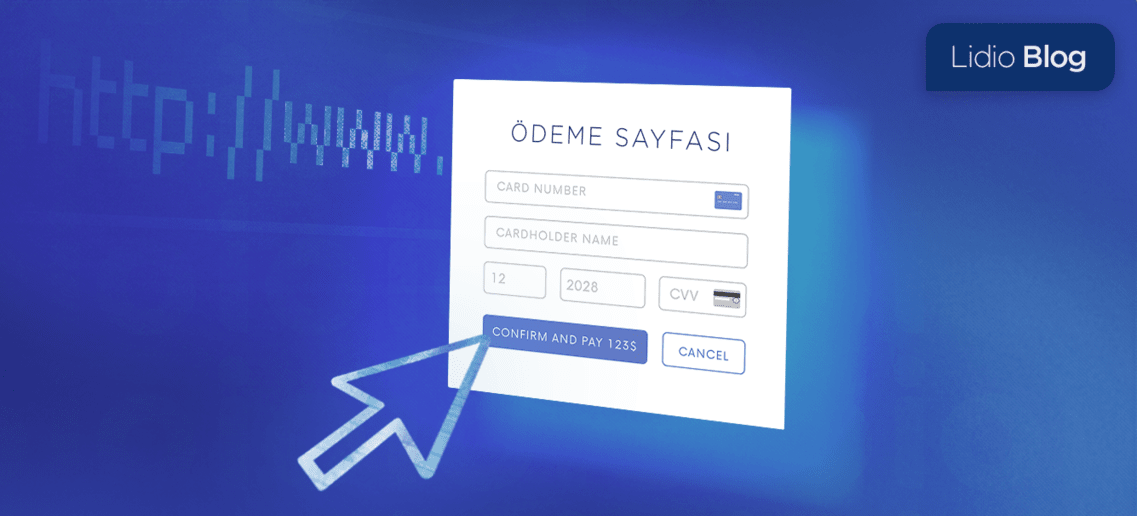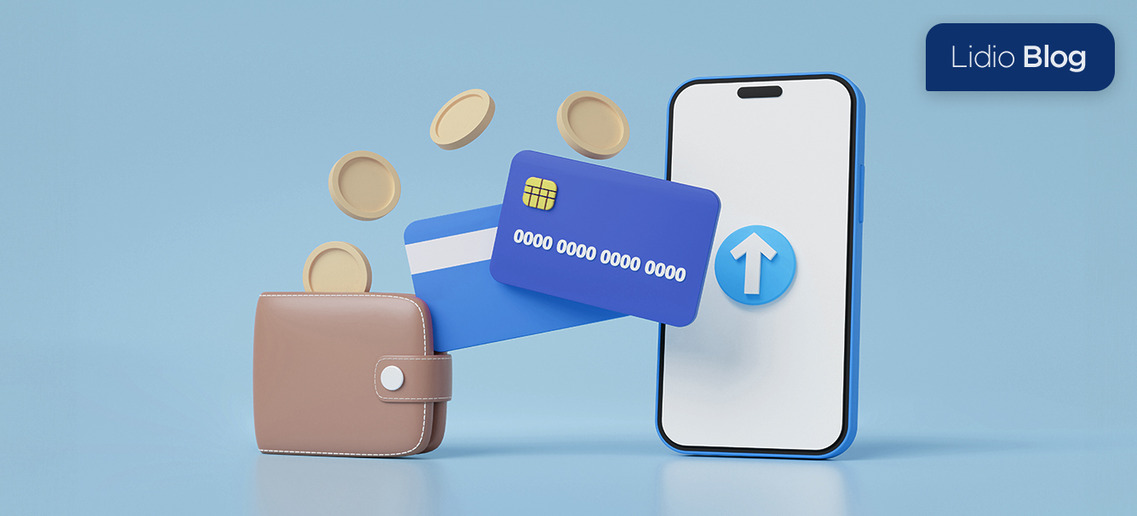
CVV Kodu Nedir?
CVV Kodu Nedir? Neden önemlidir? Öğrenmek için blog yazımızı zirayet edin!...
Sanal POS hakkında tüm bilmeniz gerekenler: Öğrenmek için blog yazımıza göz atın!

Sanal POS, fiziksel POS cihazları ile karşılaştırıldığında çok daha yeni ancak hızla yaygınlaşan bir ödeme teknolojisidir. Günümüzde online alışverişin olmazsa olmazları arasında yer alan sanal POS, temel olarak fiziksel POS cihazlarının yaptığı işlemleri internet ortamına taşımayı mümkün hale getirir. Peki sanal POS süreçleri hangi adımlardan oluşur, nasıl kullanılır ve güvenli midir? Tüm bu soruların cevaplarını ve çok daha fazlasını içeriğin devamında bulabilirsiniz.
POS (Point of Sale), bilindiği gibi alışverişlerde nakit yerine banka ya da kredi kartı kullanmak istediğinizde ilgili ücretin sizden tahsil edilmesini sağlayan elektronik cihazlardır. Sanal POS (Virtual Point of Sale - VPOS) ise benzer şekilde internet üzerinden yaptığınız alışverişlerin ücretini kart bilgileriniz aracılığıyla sizden tahsil eder. Ancak VPOS işlemlerinde fiziksel bir POS cihazına ihtiyaç duyulmaz. Sanal POS ile kartınızdan çekilen ücret de doğrudan ürün veya hizmet aldığınız satıcıya aktarılır. Günümüzde sanal POS adımını büyük ölçekli e-ticaret sitelerinden belirli ürünler satan butik internet sitelerine kadar online ödeme alan tüm platformlarda görebilirsiniz. Bunun en önemli sebebi ise VPOS’un hem satıcılara hem alıcılara benzersiz kolaylıklar sağlamasıdır. Sanal POS hizmetleri, lisanslı ödeme kuruluşları tarafından sunulduğu için güvenlik bakımından da herhangi bir risk oluşturmaz. Hatta bankalar, web sitelerinin VPOS ile satış yapabilmesi için belirli güvenlik kriterlerinin sağlanmasını talep eder.
İnternet ortamında banka veya kredi kartı ile gerçekleştirdiği satışların ücretini tahsil etmek isteyen tüm kuruluşlar sanal POS hizmetinden faydalanabilir. 7/24 tahsilat olanağı, anında ve güvenli tahsilat, takip ve raporlama imkanı gibi VPOS avantajlarından yararlanabilmek içinse çeşitli kriterlerin yerine getirilmesi gerekir. Bu kriterler ise şu şekildedir;
Sanal POS kullanabilmek için gereken şartları yerine getirdiğinizde bankalar ve çeşitli finans kuruluşları aracılığıyla VPOS için başvuru yapabilirsiniz. Ancak bankaların bu konuda herhangi bir danışmanlık hizmeti sunmadığını, yalnızca şartları yerine getiren firmalar için sanal POS hizmeti verdiğini unutmamalısınız. VPOS ile ilgili danışmanlık dahil kapsamlı bir entegrasyon hizmeti almak için dijital ödeme platformlarından yararlanabilirsiniz. Lidio, Türkiye’nin en büyük dijital ödeme platformu olarak sanal POS süreçlerinin tümünde size detaylı ve çok yönlü bir hizmet sunar. Fintech alanındaki deneyimlerini yenilikçi bir yaklaşımla müşterilerine yansıtan Lidio, ek olarak tüm banka ve ödeme kuruluşları ile gerçekleştirdiği iş birlikleri sayesinde tek platform üzerinden kolayca hizmet almanızı sağlar. Üstelik tüm bunları uygun komisyon ücretleriyle yapar. Ayrıca Lidio Core desteği ile dilerseniz Lidio’nun veya tüm bankaların; hatta diğer bir ödeme kuruluşunun sanal POS’unu kullanabilirsiniz. Dilediğiniz zaman ekleyip çıkarabileceğiniz Akıllı İşlem Yönlendirme , Fraud/Sahtecilik Önleme , Kart Saklama ve Tek Tıkla Ödeme gibi katma değerli servislerimizden de yararlanabilirsiniz Hızlıca entegrasyon sağlayarak uygun komisyon oranlarıyla satış yapmaya başlayabileceğiniz Sanal POS ürünümüzü inceleyip, bizimle iletişime geçmek için tıklayın.

CVV Kodu Nedir? Neden önemlidir? Öğrenmek için blog yazımızı zirayet edin!...

Provizyon Nedir? Provizyon Ne İçin Kullanılır? Öğrenmek için blog yazımızı ziyaret edin!...

QR Kod Nedir? QR Kod Ne İçin Kullanılır? Öğrenmek için blog yazımızı zirayet edin!...

Linkle ödeme nedir, linkle ödeme sistemi nasıl çalışır, avantajları nelerdir, ve linkle ödeme nasıl alınır merak ediyorsanız detaylı bilgi için blog yazımızı okuyun!...

Ödeme sistemleri, online mağazalarınızda müşterilerinizden ödeme almak için kullanılan finansal teknolojilerin tümüne verilen addır. Detaylı bilgi için web sitemizi ziyaret edin!...

Ödeme sayfası nedir, sayfa güvenliği nasıl anlaşılır, ödeme sürecinin güvenli olduğundan emin olma yolları nelerdir hakkında detaylı bilgi için blog yazımızı okuyun. ...

Startup Nedir? Startup nasıl kurulur öğrenmek için blog yazımızı zirayet edin!...

Check Out Nedir? Neden önemlidir öğrenmek için blog yazımızı zirayet edin!...

Dijital Cüzdan Nedir? ? Neden önemlidir öğrenmek için blog yazımızı zirayet edin!...

E-Tahsilat Nedir? E-Tahsilat Ne İçin Kullanılır? Öğrenmek için blog yazımızı zirayet edin!...

İnternet alışverişinde tüketicilerin hakları nelerdir, kabul edilen sözleşmeler neyi ifade eder detayları ile öğrenmek için blog yazımıza göz atın!...

Sanal POS hakkında tüm bilmeniz gerekenler: Öğrenmek için blog yazımıza göz atın!...

Sepeti terk etme oranları işletmeler için neden önemlidir, nasıl minimize edilir öğrenmek için blog yazımıza göz atın!...

Geleneksel ödemelerden açık bankacılığa finansal serbestleşme nedir ve neden önemlidir öğrenmek için blog yazımıza göz atın!...

Uluslararası ödemeler nasıl gerçekleştirilir, hangi yöntemler kullanılır öğrenmek için blog yazımıza göz atın!...

Ödeme alma sürecinde tahsilatları tek ekrandan yönetmek işletmelere ne gibi avantajlar sağlar öğrenmek için blog yazımıza göz atın!...

ERP nedir, POS ve hesap hareket takibi nasıl yapılır öğrenmek için blog yazımıza göz atın!...

Issuer, Acquirer ve PSP kavramları nelerdir, PSP seçimi neden önemlidir öğrenmek için blog yazımıza göz atın!...

İnternetten yapılan alışverişlerde dolandırıcılığa karşı kullanılan güvenlik önlemleri nelerdir öğrenmek için blog yazımıza göz atın!...

E-ticarette online satış yapmanın püf noktaları nelerdir, tüketici deneyimi nasıl iyileştirilir öğrenmek için blog yazımıza göz atın!...

Açık bankacılık nedir, işletmelere nasıl avantajlar sağlar öğrenmek için blog yazımıza göz atın!...

Güvenli online alışverişin şifresi: 3D Secure Ödeme nedir, ne işe yarar öğrenmek için blog yazımıza göz atın!...

Kredi kartı, kapıda ödeme, havale/kredi, mobil ödeme gibi alternatif ödeme yöntemleri nelerdir, nasıl kullanılır öğrenmek için blog yazımıza göz atın!...